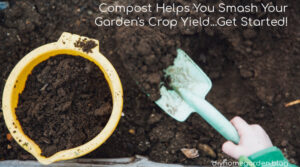Like their cousins the raspberries, blackberry bushes are very easy to grow and care for, primarily in USDA hardiness zones 5-8. They’re considered mainly perennials except for the shrubs that sit above the ground, often treated as a biennial.
While the roots survive through seasons, blackberry canes grow vegetatively for only a year, bear fruit the following year, then die, giving new growth.
As you shop around, you will find mainly three types of blackberries:
- Erect thorny blackberry—grows upright, therefore, doesn’t need support for the canes. The canes have very sharp spines, hence the name.
- Erect thornless blackberry—also exhibits an upright growth habit, requiring no support. However, the canes are without the prickly thorns.
- Trailing thornless blackberry—has sprawling canes, which require a system of wires or a trellis to sustain them above the ground.
Frequently Asked Questions About Growing Blackberry Bushes
Here are the questions most gardeners ask about growing blackberries.

Where is the best place to plant blackberry bushes?
Plant your blackberry plants in a full-sun location with plenty of room for them to grow.
Do blackberry bushes spread?
Yes. Blackberries spread aggressively via underground stems called rhizomes, usually growing only a few inches underneath the soil surface.
How long does it take for a blackberry bush to bear fruit?
The first year after their stems emerge, blackberry bushes grow and put forth flower buds. Flowering and fruiting occur in the second year, after which the plant dies and should be removed. Every growing season, a new set of shoots spring up as replacements.
Do blackberry bushes come back every year?
All blackberries are perennials, purely courtesy of their rhizomes.
What time of year do you plant blackberry bushes?
The best time to plant blackberry is in early spring (when the cane(s) are dormant) or late fall. Delay until early spring, primarily if you reside in icy areas, as the low temperatures may kill some hybrid varieties.
Do blackberries need a trellis?
This will depend on the growth habit of your blackberry plant, which can be trailing, erect or semi-erect. Offer a trellis for the semi-erect and the following types to help support the long canes. Consider maintaining your erect blackberries at around 3 feet tall to avoid them being blown over by the wind.
How big does a blackberry bush get?
Blackberry bushes grow three to five feet tall and wide.
Do blackberry bushes need full sun?
Blackberries grow and fruit best in full sun. The extreme shade will hinder their fruit production.
Can you grow blackberries in a 5-gallon bucket?
If growing blackberries plants in a container, consider using a five-gallon (19 L.) or even a more giant bucket with space for at least 15 cm (6 inches) of soil. Blackberry roots tend to spread out rather than penetrate deep down, so you can comfortably use a shallow container provided that you have adequate room for the plants to develop canes.
Is Epsom salt good for blackberries?
Like other Rosaceae family members (including roses), Blackberries will benefit from the magnesium levels in Epsom salts. However, you don’t want to use it as a substitute for fertilizer since the mineral has zero traces of phosphorous, nitrogen, or potassium— the essential nutrients needed by plants.
How quickly do blackberry bushes grow?
A blackberry bush will take up to two growing seasons (after planting the seeds) to begin fruiting.
How long do blackberry plants last?
Blackberry shrubs can live and bear fruit for fifteen to twenty years. After fruiting in the second year, the canes will die off. Prune them off at that point to pave the way for new growth.
Should you cut back blackberry bushes?
Not only does pruning help make your blackberry bushes manageable, but it also boosts yields, creating healthier, more vigorous plants.
Can you plant strawberries with blackberries?
Both shrubs spread via suckers, which may make it a bit difficult to keep them from overwhelming each other. It, essentially, would be a mess to keep everything tidy.
If you would like to have both plants, then consider having your strawberry patch as a stand-alone “feature.”
Can you grow blackberries in a container?
Yes, you can successfully grow blackberries in a bucket or planter.
Just ensure that you decide in advance on how many plants to grow, how much you would want them to reproduce or spread, and the yield you expect at harvest time. All these will help determine the size of your container.
Containers should be at least 24 inches (61 cm) in diameter, but a 91 cm (36-inch) diameter is ideal, especially for the development and growth of new shoots.
If possible, use fabric bags—rather than hard plastic or ceramic pot—to allow the plants’ roots a little flexibility, plus they’re a lot easier to relocate for maximum sunlight.
What can you not plant with blackberries?
Avoid growing your blackberry bushes too close to potatoes, tomatoes, peppers, eggplant, strawberries, and wild blackberries to avoid the risk of disease spread.
How many blackberry bushes do I need?
This depends on the size of your family and the amount of craving. But for a family of three or four, 3-5 blackberry plants are sufficient—because each plant can produce between eleven to twenty pounds of fruit.
Do blackberry bushes need a lot of water?
Blackberries are pretty drought-tolerant. Therefore, they won’t need as much water. However, irrigate the plants frequently during the growing season to enhance the production of fresh berries.

How to Plant Blackberry Bushes
- Select a well-drained, sunny spot with no standing water.
- Prepare the soil by working in compost or other organic material.
- Spacing should be five to six feet for the semi-erect cultivars, three feet apart for the erect varieties, and five to eight feet apart for the trailing cultivars. Space rows approximately eight feet apart.
- Dig holes twice the size of the plant’s root mass, OR even simpler, plant shallowly—about an inch deeper than their nursery growing depth.
- Water thoroughly immediately after planting.
- Mulch with pine needles compost (about two to three inches) to help retain moisture and prevent weed growth.
Care Tips to Grow Blackberry Bushes
Here is how you can care for your shrubs.
Watering:
- Keep the plants well-watered throughout their growing season, especially during dry weather. Offer about 1-1 ½ inches of water a week to keep the soil moist and not saturated. If possible, irrigate using a trickle or drip system that releases water with less force at the soil level.
- Overhead sprinklers are best used in the morning—to allow the plants’ foliage to dry before evening, therefore minimizing disease problems.
Mulching:
- Mulch throughout the season to retain moisture and suppress the weeds.
Fertilizing:
- In early spring, just before the leaves sprout, fertilize with an all-purpose fertilizer (16-16-8 or 10-10-10), making sure to follow the manufacturer’s instructions.
Pruning:
- Blackberry canes are biennial, meaning they’ll die off in the second year post-fruiting. Trim them away after harvesting.
- Consider tip-pruning the new canes that haven’t fruited to about 91 cm in summer for established shrubs. This will encourage the canes to branch out, boosting the fruiting process.
- Prune the canes immediately to the ground once you’re done harvesting the fruits.
- Before new growth begins in early spring, remove all the winter-damaged canes, thinning out the rest to about four to five most vigorous canes.
Blackberry Harvesting and Storage Tips
- Berries don’t ripen off the trees; therefore, pick only the entirely black ones.
- Pick often (every couple of days) once they begin to ripen—ensuring the central plugs within the fruits.
- Harvesting should be in the cool of the day. Place the berries under a shade, then refrigerate as soon as you can. But keep in mind that refrigeration will last them only a few days.
- To prolong the berries’ shelf life, consider canning or freezing.
Blackberries Can Provide Valuable Nutrients
- In addition to being rich in vitamins (C and K), minerals, and fiber, blackberries (just like strawberries and raspberries) are incredibly high in ellagic acid, a “scavenger” antioxidant that helps inactivate the potentially cancer-causing chemicals in the body.
- The other pack of antioxidants also works to ensure healthy cholesterol levels, reducing the risk of cardiovascular disease.
The Takeaway: Blackberry Bushes Are Easy to Grow and Super Nutritious
When you have the right growing conditions, blackberry bushes are easy to grow.
Below are a few blackberry varieties to check out. However, be sure to confirm what cultivars work best for your growing zone.
- Arapaho—hardy in zones 5-7
- Darrow—zones 5-8
- Prime-Ark Freedom—hardy in zones 6-8.
While it’s possible to start blackberry bushes from seeds, it’s much easier to grow the shrubs from bare roots, cuttings, or tips.


